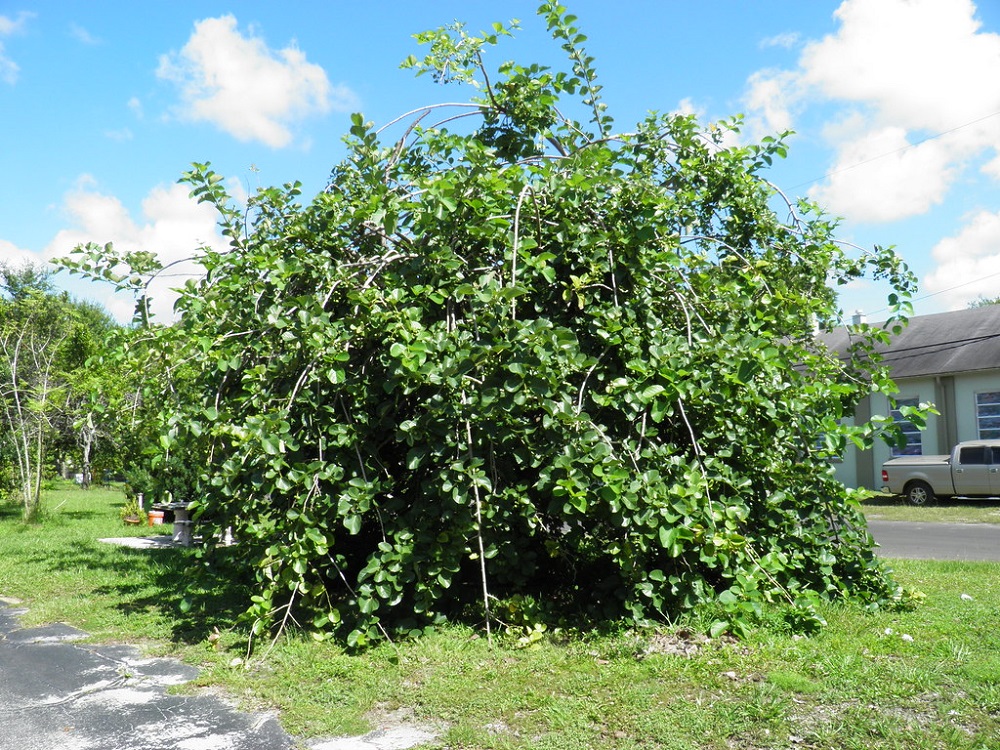Lasora - Indian Cherry Tree

Cordia myxa
Summary
Scientific Classification
Kingdom: Plantae
Division: Magnoliophyta
Class: Magnolipsida
Order: Boraginales
Family: Boraginaceae
Genus: Cordia
Species: C.myxa
Scientific Name: Cordia myxa L.
Common names
English : Indian Cherry, Sebesten Plum, Sapistan, Clammy Cherry, Assyrian Plum.
Hindi: Bahuar, Gunda, Lasora.
Kannada: Challe Hannu.
Marathi: Bhokar, Gondani, Gondhan.
Discription
- Habit and Habitat: It is a broad-leaved deciduous tree, dioecious shrub or small tree up to 12 m tall; straight; bark grey, cracked; branches spreading, forming a dense crown; branchlets hairy, later glabrous, with very prominent leaf scars.
- Distribution: Distributed primarily in Asia, but found abundantly growing from East i.e., Myanmar to the West i.e., till Afghanistan.
- Morphology:
Leaf: : Leaves alternate, simple; stipules absent; petiole 0.5–4.5 cm long; blade broadly ovate to orbicular, sometimes obovate, 3–18 cm × 3–20 cm, base rounded to cordate or cuneate, apex rounded to obtusely acuminate, margins entire to toothed, glabrous above, glabrous to velvety hairy below.
Inflorescence: Inflorescence a lax terminal or short lateral panicle, 3–8.5 cm long, many-flowered; bracts absent.
Flowers: Flowers unisexual, regular, white to creamy; pedicel 1–2 mm long; male flowers with campanulate calyx 4.5–5.5 mm long, 3-lobed, shortly hairy inside, glabrous outside, corolla tube 3.5–4.5 mm long, lobes 5, elliptical, c. 5 mm × 2 mm, reflexed, stamens inserted at corolla throat, exserted, filaments 1.5–3.5 mm long, ovary rudimentary; female flower with tubular-campanulate calyx 6–8.5 mm long, irregularly 3–4-toothed, densely hairy inside, glabrous outside, corolla tube 4.5–6.5 mm long, lobes 4–6, elliptical to obovate, 5–7 mm long, reflexed and rolled up, staminodes with sterile anthers, ovary superior, ellipsoid to obovoid, 4-celled, style 8–9 mm long, with 4 stigmatic branches 4–5 mm long.
Fruit: Fruit a globular to ovoid drupe 2–3.5 cm long, apiculate, enclosed at base by the accrescent calyx, yellow, apricot or blackish when ripe, pulp almost transparent, mucilaginous, sweet-tasting.
Seeds:1–2-seeded.
Flowering and Fruiting time: March-August. - Propagation: Cordia myxa is propagated by seed or stem cuttings. As plants grown from seeds show large variation, vegetative propagation of plants producing large fruits is preferred. Seeds are soaked in cold water for 6 hours before planting and germinate within 40–60 days. The germination rate is 50–80%. There are about 18.000 seeds/kg. Seedlings require 4–6 months in a nursery before planting out.
-
Importance:
a. Edible Uses
Fruit - raw or cookedThe ripe fruit has a sweet, sticky, mucilaginous flesh, it can be mixed with honey to make a sweetmeat or to sweeten gruels and porridges. The unripe fruits are eaten as a vegetable. The ovoid fruit is about 35mm in diameter. Seed – raw, . It tastes somewhat like a filbert (Corylus maxima). The seed is oily, containing palmitic, stearic, olic and linoleic acids and β-sitosterol. Flowers - used as a vegetable.Leaves and young shoots - cooked and used as a vegetable.
b. Medicinal
The sticky, mucilaginous pulp of the fruit is the source of a well-known medicine in the Near and Middle East. Called ‘sapistan’, it is useful in the treatment of coughs, sore throats and chest-complaints on account of its demulcent property. The fruit is also used externally as an emollient plaster to maturate abscesses, to calm rheumatic pain and as an antiparasitic on ringworm Stereols and a gum have been recorded in the leaves.The leaves and the fruits contain pyrrolizidine alkaloids, coumarins, flavonoids, saponins, terpenes and sterols.
c. Agroforestry Use
The plant is used in shelter-belts in semi-arid regions to prevent soil erosion Used as a shade tree in coffee plantations in Yemen.
d. Other Uses
A fibre obtained from the stem bark is used to make twine and cordage. The fibre is also used for caulking boats.The leaves and fruits are used as dyes There is a substance in the fruit that will stain linen, but not indelibly.The fibrous bark is used for cordage.The ash of the young branches is used to make soap.The sticky, mucilaginous pulp of the fruit is used as a glue.The wood has been used as fire-sticks.The yellow-brown wood is soft but strong, easy to polish. It is used for furniture making, cabinet work, well curbs, boats and agricultural implements. - Location: back yard of Boys Hostel.
 Trees of GSS Project supported by Makerspace Belgaum Website concept and designe by
Trees of GSS Project supported by Makerspace Belgaum Website concept and designe by